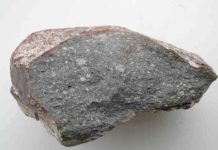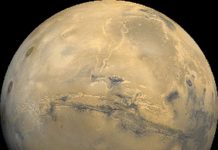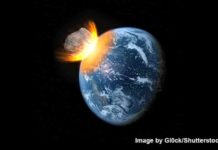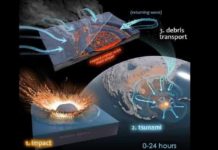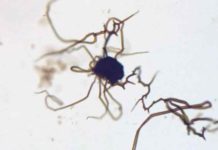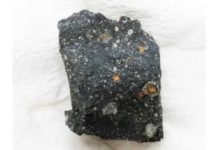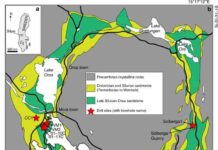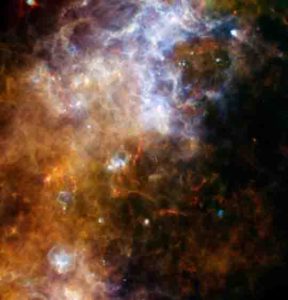
Life on our planet might have originated from biological particles brought to Earth in streams of space dust, a study suggests.
Fast-moving flows of interplanetary dust that continually bombard our planet’s atmosphere could deliver tiny organisms from far-off worlds, or send Earth-based organisms to other planets, according to the research.
The dust streams could collide with biological particles in Earth’s atmosphere with enough energy to knock them into space, a scientist has suggested.
Such an event could enable bacteria and other forms of life to make their way from one planet in the solar system to another and perhaps beyond.
The finding suggests that large asteroid impacts may not be the sole mechanism by which life could transfer between planets, as was previously thought.
The research from the University of Edinburgh calculated how powerful flows of space dust — which can move at up to 70 km a second — could collide with particles in our atmospheric system.
It found that small particles existing at 150 km or higher above Earth’s surface could be knocked beyond the limit of Earth’s gravity by space dust and eventually reach other planets. The same mechanism could enable the exchange of atmospheric particles between distant planets.
Some bacteria, plants and small animals called tardigrades are known to be able to survive in space, so it is possible that such organisms — if present in Earth’s upper atmosphere — might collide with fast-moving space dust and withstand a journey to another planet.
The study, published in Astrobiology, was partly funded by the Science and Technology Facilities Council.
Professor Arjun Berera, from the University of Edinburgh’s School of Physics and Astronomy, who led the study, said: “The proposition that space dust collisions could propel organisms over enormous distances between planets raises some exciting prospects of how life and the atmospheres of planets originated. The streaming of fast space dust is found throughout planetary systems and could be a common factor in proliferating life.”
Reference:
Arjun Berera. Space Dust Collisions as a Planetary Escape Mechanism. Astrobiology, 2017; DOI: 10.1089/ast.2017.1662
Note: The above post is reprinted from materials provided by University of Edinburgh.



